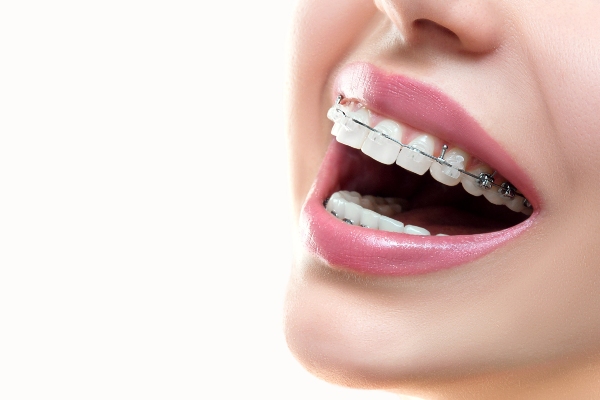 Many adults opt to straighten their teeth with braces. Whether they have never had braces or their teeth have shifted out of place since having teen braces, it is never too late to work toward a picture-perfect smile. If you choose this traditional teeth-straightening option, it can help you know the types and what to expect.
Many adults opt to straighten their teeth with braces. Whether they have never had braces or their teeth have shifted out of place since having teen braces, it is never too late to work toward a picture-perfect smile. If you choose this traditional teeth-straightening option, it can help you know the types and what to expect.
Types of adult braces
There are a few types of adult braces. The most affordable option is usually traditional braces, which consist of metal. Traditional braces comprise metal brackets, wires, and ligatures (the clear or colorful rubber bands on each bracket). While metal braces may be noticeable, patients can choose whichever color rubber bands they like, including clear bands.
On the other hand, self-litigating braces do not require ligatures. Instead, the metal wire will pass through a metal clip on each bracket. This setup also makes for a faster appointment, as there is no need to spend time switching out ligatures.
Lingual braces are another great braces option for adults. Like traditional braces, these braces are fixed to the back of the teeth instead of the front. While effective, they tend to be less affordable than traditional braces.
What to expect with braces for adults
No matter the type of adult braces, patients can expect an initial adjustment period followed by regular appointments to tighten braces and long-term dietary restrictions. They can also expect minor changes to their oral hygiene routine. Learn more below.
The adjustment period
Adult braces have an initial adjustment period, just like teen braces. Patients can expect their mouths to be sore for about a week after first getting braces. During this time, they will also grow accustomed to how their teeth feel with brackets and wires. The dentist may suggest the patient place orthodontic wax over their brackets as their lips adjust to them; biting down on bite wafers can help ease the general soreness. Over-the-counter pain medications can also help relieve the pain associated with adult braces.
Braces will need to be tightened every four to six weeks or so. It is normal to feel some discomfort and soreness for about one to three days afterward. Fortunately, patients can use the same pain management techniques they used during the initial adjustment period.
Braces-friendly diet
Since braces are attached to the teeth, they may break off while eating certain foods. For this reason, patients should avoid eating these foods while they have adult braces. Some examples are crunchy, sticky, and hard foods such as nuts, popcorn, gum, and uncooked fruits and vegetables.
Oral hygiene changes
Adults with braces will likely need extra time to care for their teeth and maintain good oral health. To floss with braces, patients will need to thread the floss through the wires. This can take some time to get used to, although a floss threader can simplify this process. Rinsing the mouth with water before flossing can also help dislodge any food stuck in the wires or brackets.
Brushing should still take only two minutes. However, it may take some time to get used to brushing the brackets in addition to the teeth. A dental professional can provide more information on how to care for adult braces.
Call to learn more about braces for adults
Are you looking to get a picture-perfect smile? Adult braces may be the answer. Call our Stockton team to book a consultation and find out if they are right for you.
Request an appointment or call Brookside Orthodontics at 209-732-1124 for an appointment in our Stockton office.
Recent Posts
Everyone deserves a smile that makes them feel confident, and for many patients, braces are a way to achieve a more symmetric smile and address aesthetic concerns. This review provides answers to common questions about braces treatment. It should help you decide if braces treatment is right for you (or your child).It helps to have…
Braces are used to address myriad oral health concerns, including but not limited to overcrowding, gaps between teeth (i.e., spacing concerns), and crooked teeth. They can also address bite complications like underbites, overbites, and crossbites. In this review, we look specifically at how braces can fix overcrowding and spacing issues in patients of all ages.Whether…
Getting braces can help you achieve better dental health and appearance. This can then affect your self-esteem and quality of life. Before consulting your orthodontist, knowing what to ask can clear up many questions that you may have about the treatment. Here are five questions that you can ask your orthodontist during your braces consultation.Committing…


